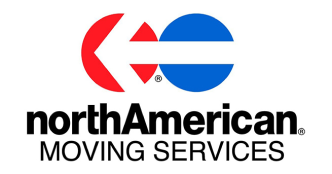Relocating an entire office can be painful for the uninitiated. In fact, most people involved in the process will experience skyrocketing stress levels, sleepless nights, and a lot of blame if anything goes wrong. That’s why it’s essential to understand the best practices for moving your business. It’s not always easy to determine office move best practices—after all, every company is unique, and no two office relocations are going to be the same. Your company may be big or small, moving far away or down the street, and may otherwise have unique needs and goals during your office relocation. Of course, there are a few best practices that all companies can keep in mind to avoid the kinds of mistakes that can cause productivity loss, unbudgeted expenses, and other problems. Here’s Cord Moving and Storage’s www.cordmoving.com top 10 lists from the experts of office move best practices for office relocations of every shape, size, and scope.
Best Practice #1: Get started early. This is the key best practice because it will usually solve 50% of the potential problems your company could encounter during your office move. Keep in mind that many office relocation problems and mistakes are the results of working on a tight schedule. Everything is more expensive when little lead time is given; you’ll have fewer choices, you’ll spend more money, and there will be more room for misjudgments caused by rushing. At least a year before your current lease expires, you should be thinking about an office move plan. Allow even more time if you have more than 50 employees. You can then use our free office move timeline to begin budgeting your time during the coming months just call 800-873-2673 and ask for Mike.
Best Practice #2: Have an office move timeline. We can’t stress this enough. You can use our free office move timeline, or you can recycle your office move plan from the last time your company relocated. We find that sticking to an office relocation schedule is the best practice for making sure everything gets done when it needs to—in a specific order. For example, you will need to have your phone and network cabling installed before you have your business phone system set up, for obvious reasons. Simply trying to remember everything that has to get done will cause key steps to be overlooked. Also, staying organized is essential. We suggest storing your office move timeline in a binder along with your vendor bids, important contacts, and other key info related to your office move.
Best Practice #3: Appoint someone to be in charge. Essentially, your office move coordinator has two jobs: his or her regular job, and the job of planning your company’s office relocation project. It’s a tough assignment, but somebody has to do it. Your office move coordinator should be a highly organized individual who is willing to internalize the best practices of planning an office move. He or she will be responsible for managing the office move committee if necessary (recommended for larger companies), communicating with vendors, and keeping key players informed.
Best Practice #4: Know what your rebranding goals are. Too often, companies don’t clearly think through the biggest opportunity that comes with an office relocation: rebranding. Part of your office relocation plan should include some careful thought about interior design, logo redesign, and reprinting your office mail pieces, forms, and other materials.
Best Practice #5: Select vendors carefully. Some of the biggest office move difficulties occur when companies simply select vendors out of the phone book or searching the internet. Well-vetted service providers are essential for successful office relocation. Everyone you hire to provide a product or service for the move should be familiar with the best practices for an office move—not just a residential move. It helps to get recommendations from trusted professionals or from other organizations similar in size to your own. Also, look for vendors that have been endorsed by a trusted third party.
Best Practice #6: Choose trusted consultants. A great architect, space planner, or even a commercial mover can be your best consultant during an office move. After all, these experts have been through countless office relocations, and they have sound knowledge of best practices, money-saving tips, and ways to minimize lost productivity during the move. There may also be a specific order in which you should hire vendors. For example, hiring an architect/space-planner before you select your commercial broker can ensure that the office spaces you are looking at will ultimately meet your company’s needs. The architect and the broker can work together to help you pick the space that needs the least amount of costly renovation.
Best Practice #7: Plan carefully for IT relocation. Every IT service provider and commercial mover can tell you an office relocation horror story involving mishandled IT equipment. Now that most companies store the majority of their essential data on servers, IT relocation gone wrong can actually bankrupt a company. It is imperative that you or your IT professional backs up your data and performs a test recovery prior to moving your IT equipment off the premises. Also, make sure you are prepared with backup power for computers to prevent damage from power surges and to minimize lost productivity from power loss.
Best Practice #8: Plan for security during and after your move. This is one of the most frequently overlooked best practices—especially during the move. Keep in mind that during a busy office relocation, your valuable equipment and furniture may be left unattended at times. Plan in advance for security systems to be working when you arrive. All servers should be transported to a locked server room to prevent theft, and at least one person should monitor open moving trucks at all times. Thefts occur more often than you may think, and it never is the movers who are responsible. A truck full of computers left unattended can be a big temptation, so don’t risk it.
Best Practice #9: Revisit your budget regularly. It’s very easy for an office move to go over budget, especially if you have never been in charge of planning a move before and you are unsure what everything is going to cost. An office move can bankrupt a company or lead to large financial setbacks, but it doesn’t have to be that way. Use our free budget planner designed by Cord’s leading expert David or your own budget worksheet to allocate funds for various vendors, organize bids, etc. Keep in mind that there will almost always be unplanned expenses, so the best practice for devising an office move budget is to leave a little wiggle room. Going over budget is much more common than coming in under budget.
Best Practice #10: Seek as much information as you can. Online resources like Movemybiz.com or tips located on Cord’s web site are packed with considerations and best practices for every stage of the office relocation process. The best practice for carrying off a mishap-free move is to do your research and understand everything that could possibly go wrong. Our office move resources are a good place to start, but there is a lot of free info out there. Just make sure you are learning from a trusted source. We have developed our list of best practices after talking to countless experts involved in the office relocation process, from voice and data professionals to our own team of office movers. Have a specific question about best practices for an office move or something else we haven’t covered yet? Contact us at 800-873-2673 We’d love to hear from you. Also, check out other useful topics like how to develop a contingency plan, considerations for selecting a commercial moving company, and much more.


